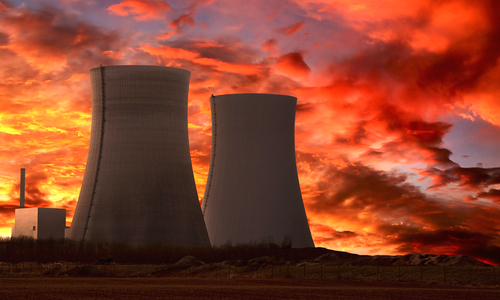
NY Times Editorial Board Delivers a ‘Prudent’ Message of Nuclear Abandonment


Appearing in the May 2 edition, The Right Lessons from Chernobyl twists and stumbles around the paper’s own reporting. Though unintended, it finally delivers a “prudent” message of essential abandonment.
The edit drew 288 entries into its comment section before it was capped. I’ve posted one of them at NukeFree.org. Overall they’re widely varied and worth reading.
Because the Times is still the journal of record, the edit is a definitive statement on an industry in dangerous decline.
Let’s dissect:
The edit begins by citing the “New Safe Confinement” shield being built over the seething remains of Chernobyl Unit 4. Already “almost a decade behind schedule,” its completion is “a race against time” due to the “decrepit state of the sarcophagus” meant to contain the radiation there.
That we still must fear Chernobyl more than 28 years after it melted and exploded underscores the “nightmarish side of nuclear power.”
That the “vast steel shield” may not be done in time, or may not even end the problem, is downright terrifying, especially in light of the “near-bankruptcy of Ukraine,” not to mention a political instability that evokes horrific images of two hot wars and the cold one.
Amidst rising tensions between Ukraine, Russia and the west, the corporate media studiously avoids Chernobyl. But Belarus and Ukraine long ago estimated its cost to their countries at $250 billion each. One major study puts the global death toll at more than a million human beings.
The Times says Chernobyl’s terror is “more powerful than Three Mile Island before it or Fukushima after it.”
Three Mile Island suffered an explosion and melt-down in 1979. Exactly how much radiation escaped and who it harmed are still unknown. The industry vehemently denies that anyone was killed, just as it denied there was a melt-down until a robotic camera proved otherwise.
At Fukushima, there is no end in sight. Bad as it was, Chernobyl was one core melt and explosion in a single Soviet reactor in a relatively unpopulated area. Fukushima is three core melts and four explosions in American-designed General Electric reactors, of which there are some two dozen exact replicas now operating in the U.S., along with still more very similar siblings.
Spent fuel is still perched dangerously in damaged pools high in the Fukushima air. Thousands of rods are strewn around the site. The exact location of the three melted cores is still unknown. At least 300 tons of highly radioactive liquid pour daily into the Pacific, with the first of their isotopes now arriving on our west coast. Huge storage tanks constantly leak still more radiation. The labor force at the site is poorly trained and heavily infiltrated by organized crime.
The Times itself has reported that a desperate, terrified population is being forced back into heavily contaminated areas. Children are being exposed en masse to significant radiation doses. Given the horrific health impacts on youngsters downwind from Chernobyl, there is every reason to fear even worse around Fukushima.
But the Times Editorial Board follows with this: “Yet it is also noteworthy that these civilian nuclear disasters did not and have not overcome the allure of nuclear power as a source of clean and abundant energy.”
“Allure” to whom? Certainly the corporations with huge investments in atomic energy are still on board. The fossil fuel industry is thoroughly cross-invested. And extraordinary corporate media access has been granted to pushing the odd belief that nuclear power can help mitigate global warming.
But the vast bulk of the global environmental movement remains firmly anti-nuclear. Grassroots opposition to re-opening any Japanese reactors is vehement to say the least. Amidst an extremely popular revolution in green technologies, U.S. opinion demands that nuclear subsidies be cut, which means death to an industry that can’t live without them.
It’s here the edit falls entirely overboard: “Only Germany succumbed to panic after the Fukushima disaster and began to phase out all nuclear power in favor of huge investments in renewable sources like wind and sun.”
Germany’s green transition has been debated for decades, stepped up long ago by Chernobyl. With strong popular backing, the German nuclear phase-out, as in Sweden, Italy and numerous other European nations (Denmark never built any reactors) has long been on the table. The center-right Merkel government finally embraced it not only because of Fukushima, but because the German corporate establishment decided that going green would be good for business. As energy economist Charles Komanoff has shown, they’ve been proven right.
Despite the predictable carping from a few fossil/nuke holdouts, Germany will shut its reactors, as will, eventually, all other nations. The edit says there may be “an increase in greenhouse emissions,” but it will be “temporary.”

 233k
233k  41k
41k  Subscribe
Subscribe 
